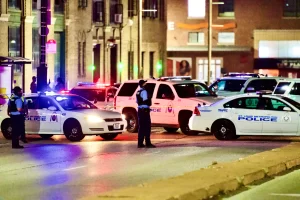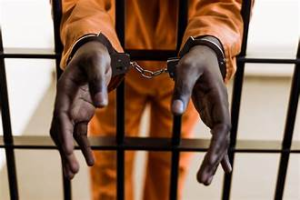Published in St. Louis American on September 5, 2019
According to its definition, the Gun Violence Archive has documented 251 mass shootings in the U.S. since January. The El Paso and Dayton massacres brought that total to 253. GVA tracks mass shootings of incidents involving at least 4 people being shot. My reaction to the wails of grief and desperation is we know these shooters.
This was the point of a recent conversation with two local community activists, Martha Jane West and Doris Baltimore. Like other conversations in Black and Brown communities across the country, we are wondering what this latest trend of targeted people of color means for our safety.
At the site of a homicide, news cameras capture inconsolable relatives and friends. A plea from a tearful loved one is always predictable: We gotta stop the killings! Words and prayers are powerful but they don’t stop bullets. Personal intervention and collective action are required.
Most of those 251 mass shootings were done by young white men. Yet society has painted young, Blacks with a broad brush of criminality and violence. These misguided young men are more likely to shoot their single victim in a fit of anger, unlike the white males who generally carry out detailed plans of mass murder with a high-powered arsenal and body armor.
In the last week or so, five communities had to endure massacres with a body count of 35 and 81 injured. We know the racist and vitriolic hate from trump’s bully pit has now put people of color in the crosshair of white nationalists.
Make a note of trump’s irrefutable provocation although this particular column is not about him. Nor is it about the stark racial contrast between how the mainstream media portrays the ethnicity of shooters. This column is about what we can immediately control in our own families and neighborhoods.
Big Mama knows her grandson Ray-Ray has a 9mm on the top shelf of his closet and that he’s easily agitated. David’s teacher read a disturbing essay about he’d like to do to a rival. Jay is his cousin’s best friend and pretty much knows what he’s thinking—and when he’s tickin’.
Whether the shooter is a white, suburban male or a black, city male, there are people who know/knew the person who pulled the trigger. These people are family members, friends, teachers, co-workers and others. The shooter has a circle of contacts around him who have witnessed his troubling behavior. The shooter is a friend, a son, a brother, an uncle, a grandson or a nephew. Too often, we act like we don’t know him, or that his behavior came out of the blue.
Our families and communities must take a more aggressive and compassionate approach to young men who are displaying behavior or communications that point to violent outcomes before law enforcement get involved. This is an important point of early contact that could curb the levels of violence infiltrating our daily lives.
This is a violent country. There have been multiple killing sprees from sea to shining sea. Every year, about 10,000 people are killed with almost double that amount injured. Let’s focus on the young people who let us know in some form or fashion that they are about to do harm to another human being. We need to get involved before these young men reach their breaking point.
You know him. We know them. It’s past time that we stop being passive spectators and save some lives.



